Experimenting with Long Exposure
The weather was very enticing yesterday. I went out in the late morning to a nearby location, Gap Lake. My main objective for the day was to experiment with long exposure photography, primarily to refresh the skills I had learned and didn’t want to lose.
Long exposures are possible in broad daylight, using neutral density filters (ND) to impede light entering the lens and subsequently reaching the camera sensor. Light is admitted at a reduced rate, requiring longer time to achieve the desired exposure. As a consequence, moving areas of the image are distorted; stationary areas are unaffected. For instance, applying an ND filter when photographing this scene would distort water and cloud movement, while mountains retain their form. This picture was taken at a shutter speed of 1/250 sec. In the brief period the shutter is open, waves on the water and clouds in the sky do not move sufficient distance to distort their appearance.
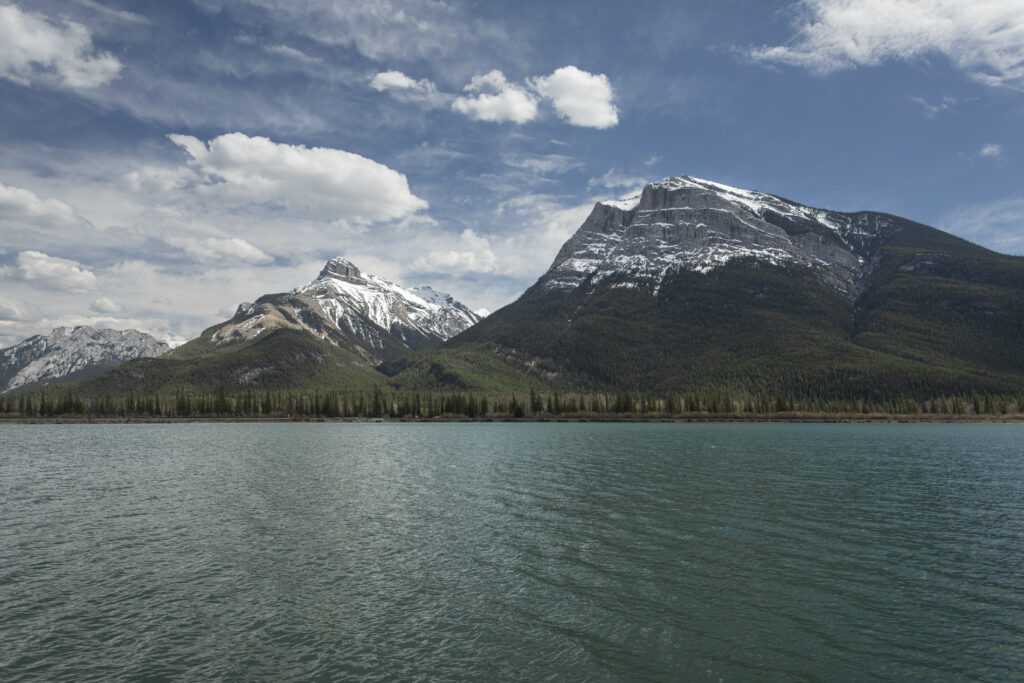
This is the same scene taken with a combination of 2 ND filters, a 10-stop and a 6-stop affixed to the front of my lens. That’s a combined 16 stops. In photography, a stop is a unit that describes the change or difference between exposure values. Adding one stop doubles your exposure, but subtracting one stop halves your exposure. In this case, I have subtracted 16 stops, resulting in a 5 minute (300 second) exposure.
This image has been exposed too long, overly exaggerating the “smoothing” of the water and the “stretching” of the clouds. One can use tables to approximate the best combination of filtering and shutter speed, but it often requires some iteration to adjust for the brightness of the ambient light. Image could be better.
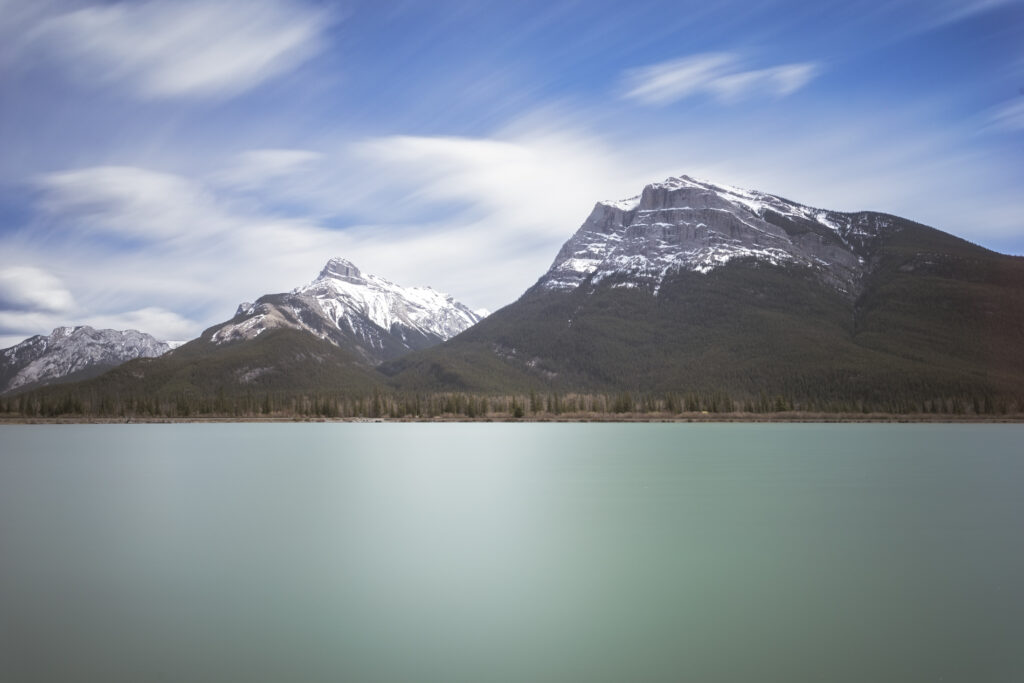
Here’s a different scene, looking in a different direction, up the lake. This is a conventional exposure, 1/400 sec, with no ND filters to temper the light. The cloud is rather weird, a very unusual pattern, perhaps I can do better with a long exposure.
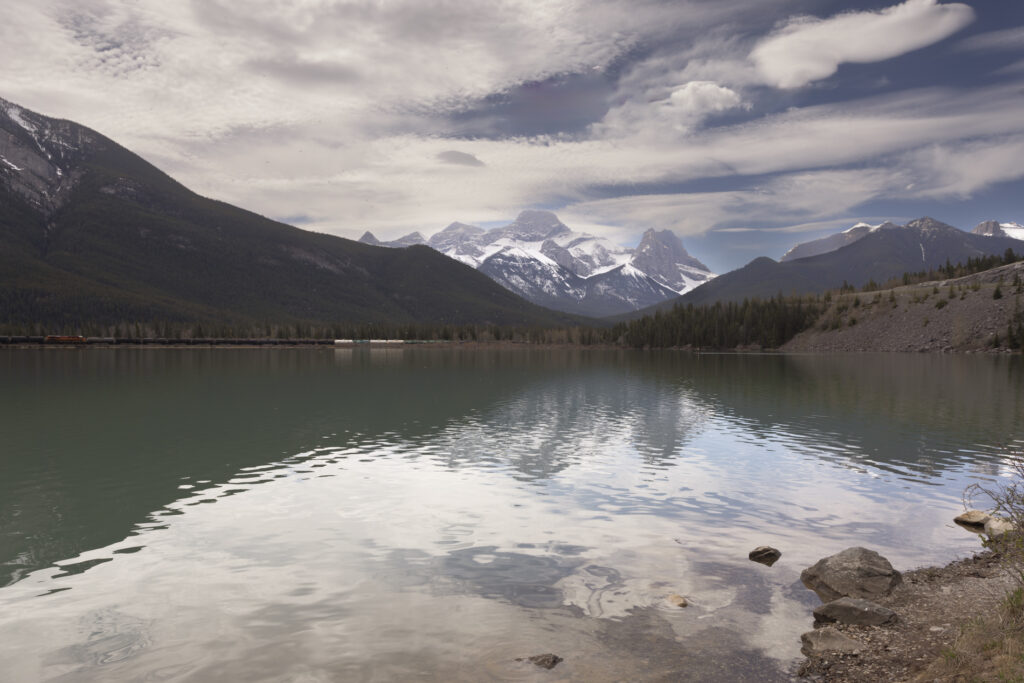
This picture of the same scene was taken about one hour later. The cloud pattern seen in the previous photograph had moved on and I was left with a more promising pattern to distort. I stayed with the same 16-stops of ND filter and shutter speed. Although the smoothness of the lake’s surface is a bit much for my liking, I do like the opacity of the water in the foreground and the cloud shaping. The overall image is not bad.
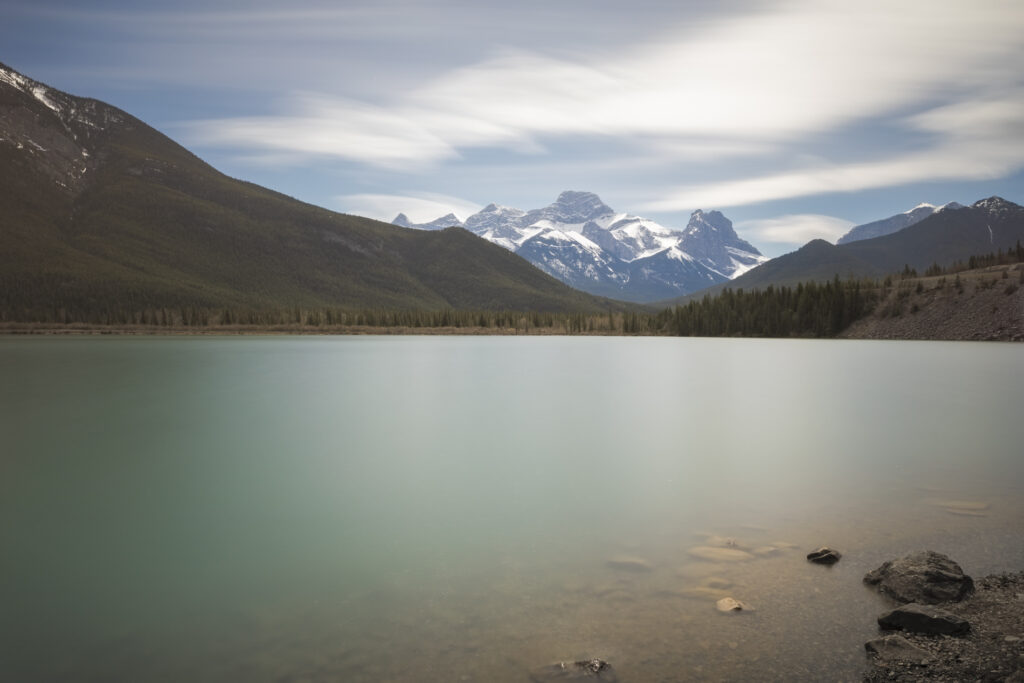
For this next photograph, I used a different approach. I applied only one filter (10 stops) and a much faster shutter speed, 60 seconds. I achieved a less exaggerated “smoothing” of the waves on the lake, which I like. This image is also quite a bit darker, not surprisingly and I like it, but for the clouds. Overall, it’s promising!
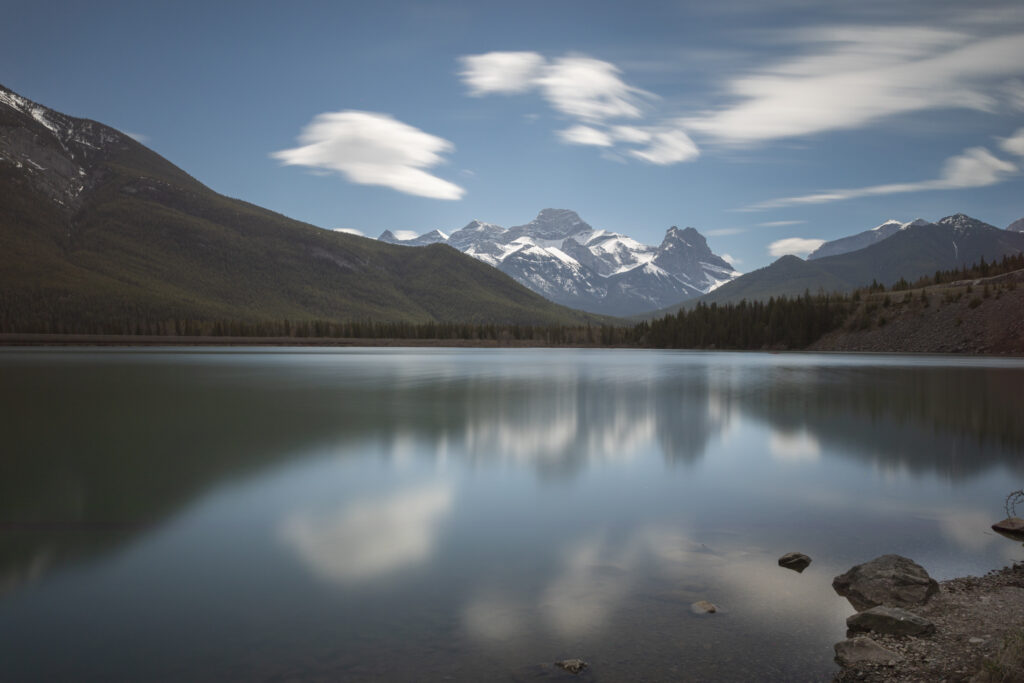
It was a good day for experimentation, with lots of variables in play: the bright ambient light, rapidly moving clouds, ND filter combinations, shutter speed, lens aperture and camera sensor sensitivity (ISO). The latter four, I control. Light and cloud movement vary constantly. Anticipating, how a cloud pattern will look after it has been exposed for a long period is pure speculation.
The ideal outcome, in my experience, includes a “distorted” sky that doesn’t differ a lot from what you might see on a windy day, not too different from the sky in “5 min Exposure”, above. It would also include a water surface that is “smoothed”, but not to an extreme degree. The lake as seen in the “60 sec Exposure” above appeals to me.
